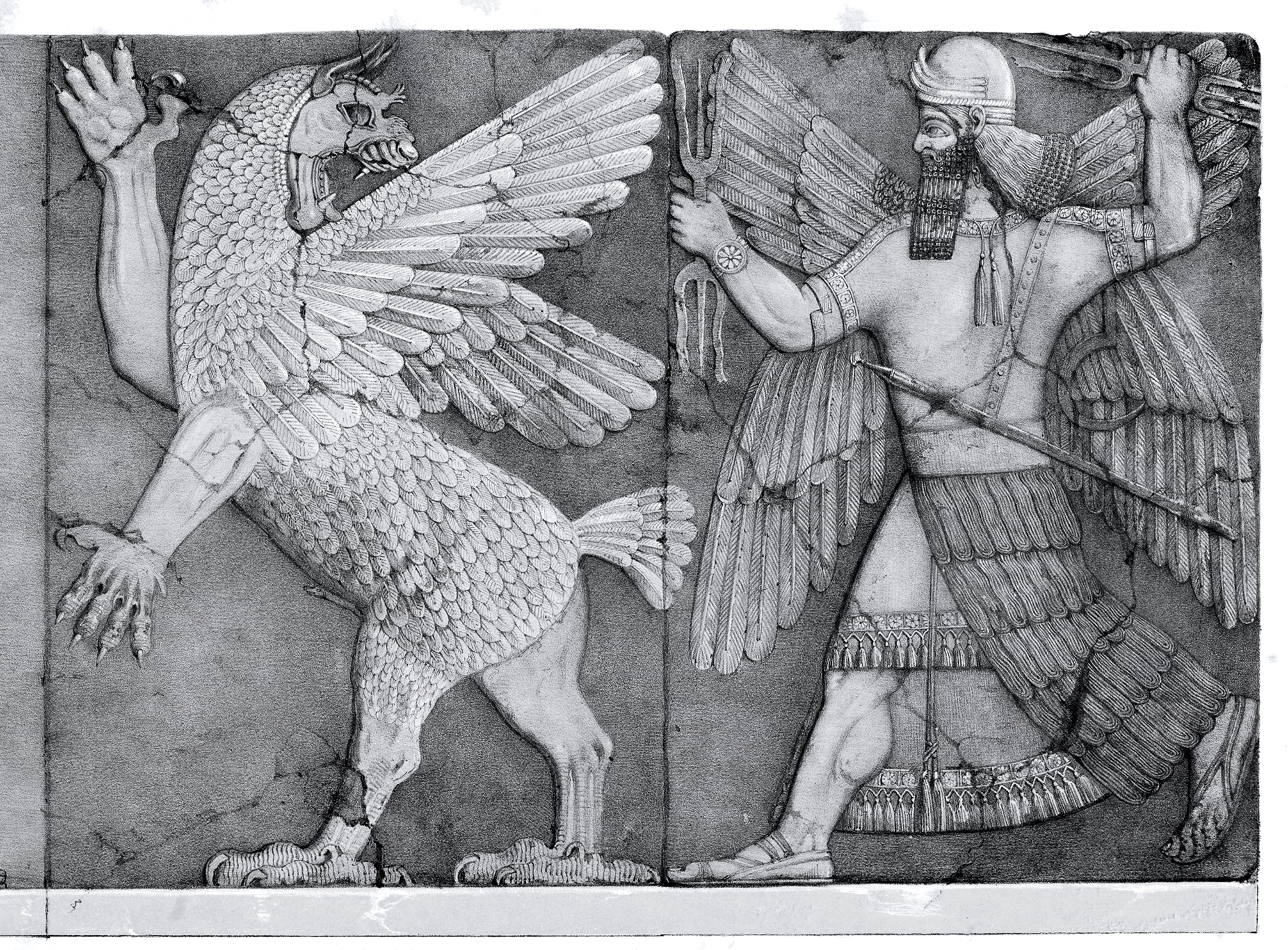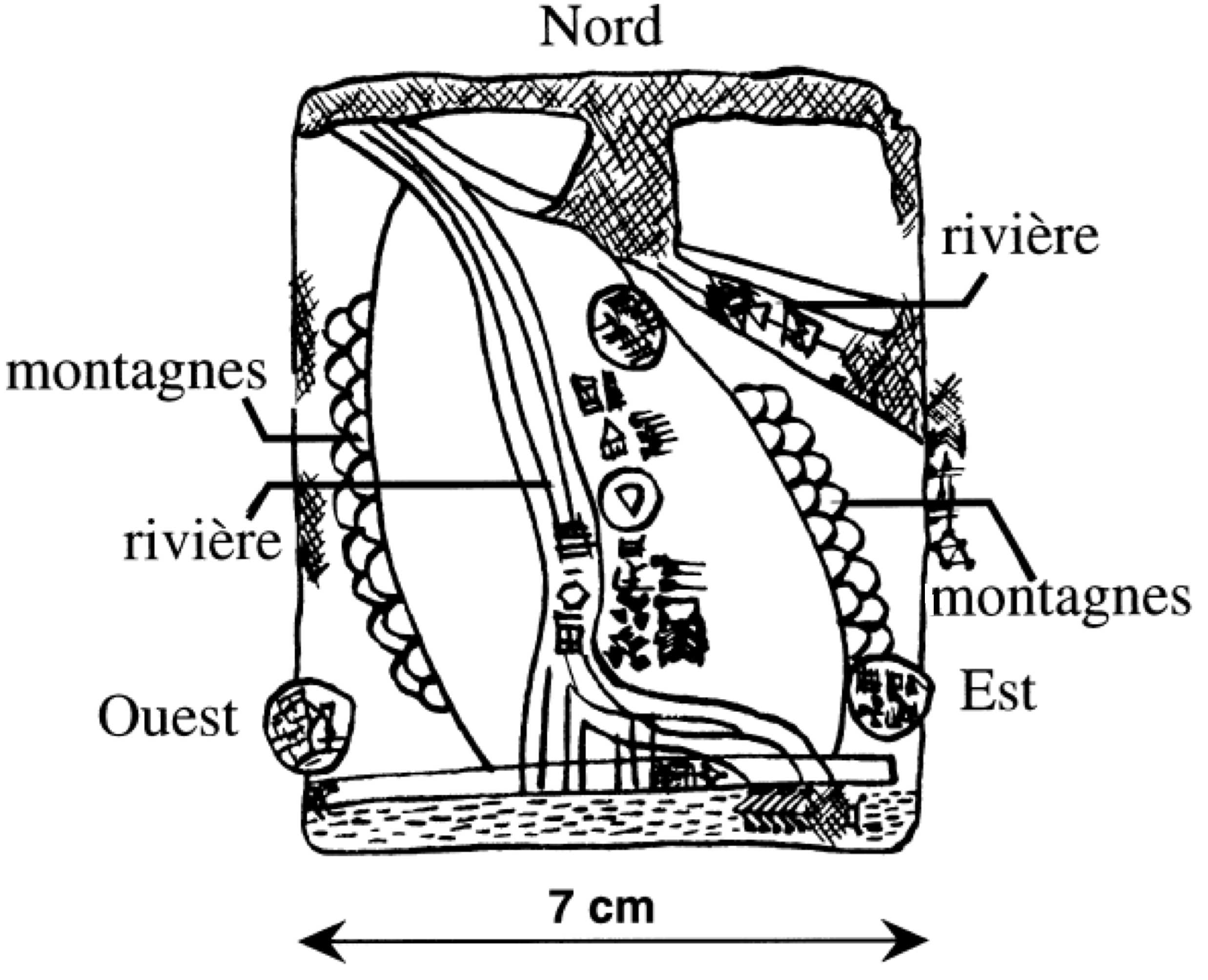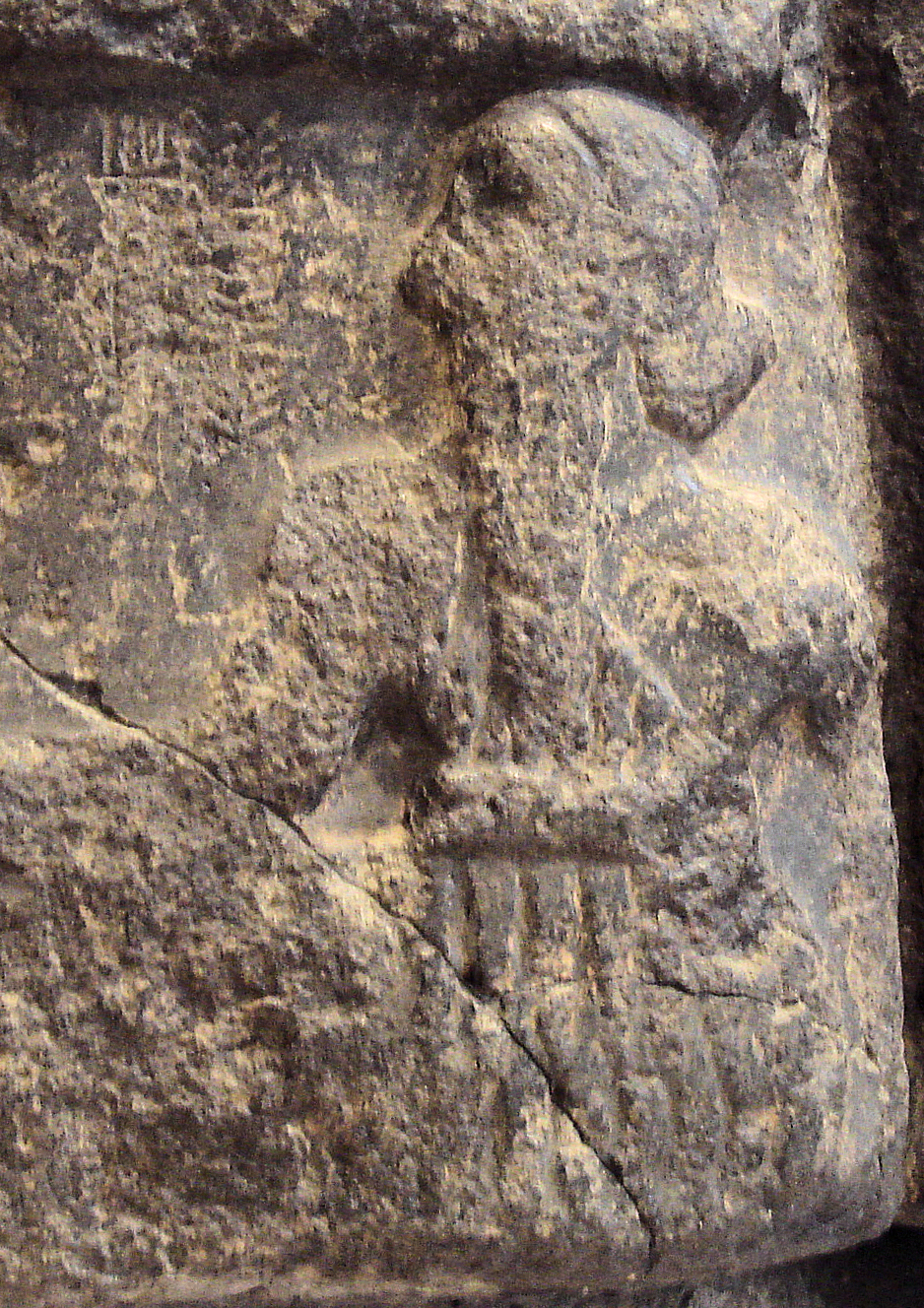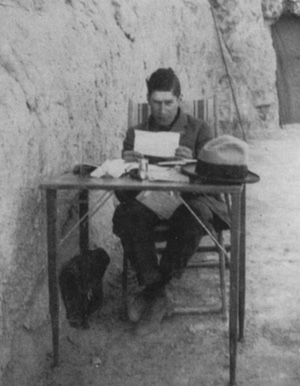|
Gaga (god)
Kakka (; also romanized as Kaka or Gaga) was a Mesopotamian deity. She was originally worshiped across Upper Mesopotamia as a healing goddess, but later on came to be secondarily viewed as a male messenger god in Babylonia. Kakka's oldest attested cult center is Maškan-šarrum, located in the south of Assyria, though she was also worshiped in the kingdom of Mari, especially in Terqa. She appears in numerous theophoric names from this area, with Akkadian, Amorite and Hurrian examples attested. As early as in the Old Babylonian period she could be associated with Ninshubur, and later on with Papsukkal as well. However, she developed connection with Ninkarrak, Išḫara and possibly Nisaba as well. The male form of Kakka appears as a messenger of Anu in the Sultantepe version of the myth '' Nergal and Ereshkigal'', and as a messenger of Anshar in ''Enūma Eliš''. Name A deity named '' dga-ga'' is already attested in the Early Dynastic god list from Abu Salabikh. It is assumed ... [...More Info...] [...Related Items...] OR: [Wikipedia] [Google] [Baidu] |
Terqa
Terqa is an ancient city discovered at the site of Tell Ashara on the banks of the middle Euphrates in Deir ez-Zor Governorate, Syria, approximately from the modern border with Iraq and north of the ancient site of Mari, Syria. Its name had become Sirqu by Neo-Assyrian times. Location Terqa was located near the mouth of the Khabur river, thus being a trade hub on the Euphrates and Khabur rivers. To the south was Mari. To the north was Tuttul (Tell Bi'a) near the mouth of the Balikh river. Terqa ruled a larger hinterland. Terqa was always second to Mari, as the valley could hold only one political main center. The region was dominated by arid/non-irrigable land, with a characteristic relationship to water resources and land exploitation. Amorite tribal groups included the Khaeans and Suteans south of Mari. Terqa would politically play to role as a minor provincial center with a governor or a petty local kingdom. History Little is yet known of the early history of Terqa ... [...More Info...] [...Related Items...] OR: [Wikipedia] [Google] [Baidu] |
Sultantepe
The ancient temple-complex, perhaps of Huzirina, now represented by the tell of Sultantepe, is a Late Assyrian archeological site at the edge of the Neo-Assyrian empire, now in Şanlıurfa Province, Turkey. Sultantepe is about south of Urfa on the road to Harran. The modern village of Sultantepe Köyü lies at the base of the tell. History Excavations have revealed an Assyrian city, with eighth to seventh century levels that were rebuilt after ca 648 BCE, containing a hoard of cuneiform tablets, including versions of the Epic of Gilgamesh and school texts including exercise tablets of literary compositions full of misspellings. The complete library of some 600 unfired clay tablets was found outside a priestly family house. Contracts also found at the site consistently record Aramaean names, J. J. Finkelstein has remarked The writings end suddenly simultaneously with the fall of nearby Harran in 610 BCE, two years after the fall of Nineveh. The tablets from Sultantep ... [...More Info...] [...Related Items...] OR: [Wikipedia] [Google] [Baidu] |
Diyala River
The Diyala (Arabic: ; ; Farsi: , ) is a river and tributary of the Tigris. It is formed by the confluence of the Sirwan and Tanjaro rivers in Darbandikhan Dam in the Sulaymaniyah Governorate of Northern Iraq. It covers a total distance of . Course It rises near Hamadan, in the Zagros Mountains of Iran. It then descends through the mountains, where for some 32 km it forms the border between the two countries. It finally flows into the Tigris below Baghdad. Navigation of the upper reaches of the Diyala is not possible because of its narrow defiles, but the river's valley provides an important trade route between Iran and Iraq. The river flows southwest of the Hamrin Mountains. Name Its Aramaic origin is "Diyalas" and in Kurdish it is called "Sirwan", meaning 'roaring sea' or 'shouting river'. In the early Islamic period, the lower course of the river formed part of the Nahrawan Canal. The Diyala Governorate in Iraq is named after the river. It may be the ancient Tornas ... [...More Info...] [...Related Items...] OR: [Wikipedia] [Google] [Baidu] |
Kalkal (god)
Kalkal was a Mesopotamian god regarded as a divine doorkeeper. He was associated with the Ekur, the temple of Enlil in Nippur. He is attested in sources from this city from multiple periods, including offering lists from the Ur III period, an Old Babylonian god list, and the Neo-Babylonian ''Nippur Compendium''. He was also worshiped in Maškan, where a temple dedicated to him existed in the Ur III period, as well as in Assur, as first attested in Middle Assyrian sources. He is also attested in a number of literary texts, such as the myth ''Nanna-Suen's Journey to Nippur'' and the lament ''Enamani Ilu Ilu''. Name and character The theonym Kalkal was written in cuneiform as '' dkal-kal'' or ''dka-al-ka-al'', with the determinative sometimes omitted. Despite phonetic similarity it is not related to the theonym Kakka. According to the god list ''An = Anum'' (tablet I, line 269) he was also known as Egaldibba (''de2-gal-dib-ba''). Kalkal was regarded as a divine doorkeeper. He was ... [...More Info...] [...Related Items...] OR: [Wikipedia] [Google] [Baidu] |
An = Anum
''An = Anum'', also known as the Great God List, is the longest preserved Mesopotamian god list, a type of lexical list cataloging the deities worshiped in the Ancient Near East, chiefly in modern Iraq. While god lists are already known from the Early Dynastic period, ''An = Anum'' most likely was composed in the later Kassite period. While often mistakenly described as a list of Sumerian deities and their Akkadian equivalents, ''An = Anum'' is focused on presenting the familial relationships between deities, as well as their courts and spheres of influence. The first four tablets list the major gods and goddesses ( Anu, Enlil, Ninhursag, Enki, Sin, Shamash, Adad and Ishtar) and their courts, arranged according to theological principles, but tablets V and VI do not appear to follow a clear system, and tablet VII is a late appendix listing the names of Marduk and one of his courtiers. Many other works of ancient scholarship were influenced by ''An = Anum'', including a simil ... [...More Info...] [...Related Items...] OR: [Wikipedia] [Google] [Baidu] |
Assyriological
Assyriology (from Greek , ''Assyriā''; and , ''-logia''), also known as Cuneiform studies or Ancient Near East studies, is the archaeological, anthropological, historical, and linguistic study of the cultures that used cuneiform writing. The field covers Pre Dynastic Mesopotamia, Sumer, the early Sumero-Akkadian city-states, the Akkadian Empire, Ebla, the Akkadian and Imperial Aramaic speaking states of Assyria, Babylonia and the Sealand Dynasty, the migrant foreign dynasties of southern Mesopotamia, including the Gutians, Amorites, Kassites, Arameans, Suteans and Chaldeans. Assyriology can be included to cover Neolithic pre-Dynastic cultures dating to as far back as 8000 BC, to the Islamic Conquest of the 7th century AD, so the topic is significantly wider than that implied by the root "Assyria". The large number of cuneiform clay tablets preserved by these Sumero-Akkadian and Assyro-Babylonian cultures provide an extremely large resource for the study of the period. The reg ... [...More Info...] [...Related Items...] OR: [Wikipedia] [Google] [Baidu] |
Gasur
Nuzi (Hurrian Nuzi/Nuzu; Akkadian Gasur) at modern Yorghan Tepe (also Yorgan Tepa and Jorgan Tepe), Iraq was an ancient Mesopotamian city 12 kilometers southwest of the city of Arrapha (modern Kirkuk) and 70 kilometers southwest of Sātu Qala, located near the Tigris river. It was occupied from the Ubaid period in the 5th millennium BC until late in the 2nd millennium BC then, after a period of abandonment, in the Parthian era. It reached major importance in the Akkadian Empire period when it was known as Gasur and again in the Mitanni period when its name was Nuzi. History The site has about 15 occupational layers with 12 major strata several of which have subdivisions. The majority of excavation work at the site was on the Late Bronze Age levels with only some soundings to the older strata. Traces of Parthian era occupation were found on the surface.Pfeiffer, Robert H., "The Excavations at Nuzi: Preliminary Report of the Fourth Campaign", Bulletin of the American Schools of ... [...More Info...] [...Related Items...] OR: [Wikipedia] [Google] [Baidu] |
Eshnunna
Eshnunna (also Esnunak) (modern Tell Asmar in Diyala Governorate, Iraq) was an ancient Sumerian (and later Akkadian) city and city-state in central Mesopotamia 12.6 miles northwest of Tell Agrab and 15 miles northwest of Tell Ishchali. Although situated in the Diyala Valley northwest of Sumer proper, the city nonetheless belonged securely within the Sumerian cultural milieu. It is sometimes, in very early archaeological papers, called Ashnunnak or Tupliaš. The tutelary deity of the city was Tishpak (Tišpak) though other gods, including Sin, Adad, and Inanna of Kiti ( Kitītum) were also worshiped there. The personal goddesses of the rulers were Belet-Šuḫnir and Belet-Terraban. History Early Bronze Inhabited since the Jemdet Nasr period, around 3000 BC, Eshnunna was a major city during the Early Dynastic period of Mesopotamia. It is known, from cuneiform records and excavations, that the city was occupied in the Akkadian period though its extent was noticeably le ... [...More Info...] [...Related Items...] OR: [Wikipedia] [Google] [Baidu] |
Akkadian Empire
The Akkadian Empire () was the first known empire, succeeding the long-lived city-states of Sumer. Centered on the city of Akkad (city), Akkad ( or ) and its surrounding region, the empire united Akkadian language, Akkadian and Sumerian language, Sumerian speakers under one rule and exercised significant influence across Mesopotamia, the Levant, and Anatolia, sending military expeditions as far south as Dilmun and Magan (civilization), Magan (modern United Arab Emirates, Saudi Arabia, Bahrain, Qatar and Oman) in the Arabian Peninsula.Mish, Frederick C., Editor in Chief. "Akkad" ''iarchive:webstersninthne000merr, Webster's Ninth New Collegiate Dictionary''. ninth ed. Springfield, MA: Merriam-Webster 1985. ). The Akkadian Empire reached its political peak between the 24th and 22nd centuries BC, following the conquests by its founder Sargon of Akkad. Under Sargon and his successors, the Akkadian language was briefly imposed on neighboring conquered states such as Elam and Guti ... [...More Info...] [...Related Items...] OR: [Wikipedia] [Google] [Baidu] |
Abu Salabikh
The archaeological site of Abu Salabikh (Tell Abū Ṣalābīkh), around northwest of the site of ancient Nippur and about 150 kilometers southeast of the modern city of Baghdad in Al-Qādisiyyah Governorate, Iraq marks the site of a small Sumerian city that existed from the Neolithic through the late 3rd millennium, with cultural connections to the cities of Kish, Mari and Ebla. Its ancient name is unknown though Eresh and Kesh have been suggested as well as Gišgi. Kesh was suggested by Thorkild Jacobsen before excavations began.Biggs, Robert D., "An Archaic Sumerian Version of the Kesh Temple Hymn from Tell Abū Ṣalābīkh", vol. 61, no. 2, pp. 193-207, 1971 The Euphrates was the city's highway and lifeline; when it shifted its old bed (which was identified to the west of the Main Mound by coring techniques), in the late third millennium BC, the city dwindled away. Only eroded traces remain on the site's surface of habitation after the Early Dynastic Period. There is an ... [...More Info...] [...Related Items...] OR: [Wikipedia] [Google] [Baidu] |
Early Dynastic Period (Mesopotamia)
The Early Dynastic Period (abbreviated ED Period or ED) is an archaeological culture in Mesopotamia (modern-day Iraq) that is generally dated to and was preceded by the Uruk and Jemdet Nasr periods. It saw the development of writing and the formation of the first cities and states. The ED itself was characterized by the existence of multiple city-states: small states with a relatively simple structure that developed and solidified over time. This development ultimately led, directly after this period, to broad Mesopotamian unification under the rule of Sargon, the first monarch of the Akkadian Empire. Despite their political fragmentation, the ED city-states shared a relatively homogeneous material culture. Sumerian cities such as Uruk, Ur, Lagash, Umma, and Nippur located in Lower Mesopotamia were very powerful and influential. To the north and west stretched states centered on cities such as Kish, Mari, Nagar, and Ebla. The study of Central and Lower Mesopotamia has l ... [...More Info...] [...Related Items...] OR: [Wikipedia] [Google] [Baidu] |
Dingir
''Dingir'' ⟨⟩, usually transliterated DIĜIR, () is a Sumerian word for 'god' or 'goddess'. Its cuneiform sign is most commonly employed as the determinative for religious names and related concepts, in which case it is not pronounced and is conventionally transliterated as a superscript ⟨d⟩, e.g. The Sumerian cuneiform sign by itself was originally an ideogram for the Sumerian word ''an'' ('sky' or 'heaven');Hayes, 2000 its use was then extended to a logogram for the word ('god' or 'goddess')Edzard, 2003 and the supreme deity of the Sumerian pantheon Anu, and a phonogram for the syllable . Akkadian cuneiform took over all these uses and added to them a logographic reading for the native '' ilum'' and from that a syllabic reading of . In Hittite orthography, the syllabic value of the sign was again only ''an''. The concept of divinity in Sumerian is closely associated with the heavens, as is evident from the fact that the cuneiform sign doubles as the ideogram f ... [...More Info...] [...Related Items...] OR: [Wikipedia] [Google] [Baidu] |






